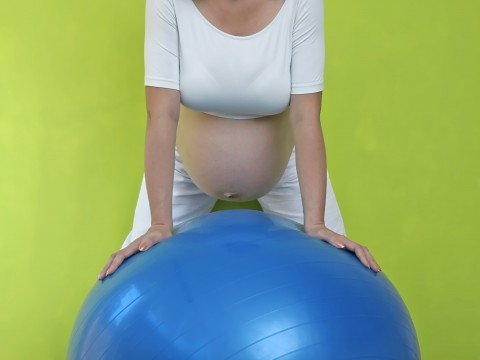When You’re Pregnant, You’ll Want to Focus Part of Your Exercise
When you’re pregnant, you’ll want to focus part of your exercise regiment on strengthening your pelvic muscles and abs. Strong abdominal muscles help you push your baby out better. (Weak abs may prolong your labor.) Your pelvic floor muscles also help you have an easier childbirth, but their primary benefit is that they prevent urinary incontinence (the inability to hold your urine when you sneeze, cough or exercise). Urinary incontinence affects one-third of new mothers, and it can also be a problem as you get older.
Strengthen your Abs for Labor
To strengthen your abs to prepare for labor, you can perform an abdominal exercise called the “angry cat.” This is a variation of a pelvic tilt that you perform on your hands and knees. This exercise strengthens your abs and it will help ease your pregnancy-related back pain. For the “angry cat” exercise, get on all fours. Breathe in and tighten your abdominal muscles, while keeping your buttocks tucked in. Hold this for a couple of seconds, and then breathe out and relax your body. (Don’t let your back sag while you rest. Get in a neutral position with your back straight as you relax.) Repeat for as many times as you feel comfortable.
It’s important that you avoid traditional sit-ups or crunches when you’re pregnant. This can aggravate a common pregnancy condition called “diastasis recti abdominis” (a painless separation of the abdominal muscles at your midline. It can occur in the second or third trimester of pregnancy.) The “angry cat” exercise is a safe way to strengthen your abdominal muscles during pregnancy.
Prepare Your Pelvic Muscles for Childbirth
To strengthen your pelvic floor muscles in preparation for labor and delivery, you’ll want to practice your Kegel exercises three times a day. Fortunately, you can practice your Kegels at your leisure during the day ““ while you’re waiting in traffic, or sitting at work. The benefits of Kegel exercises are numerous. You’ll not only have a more comfortable labor, but having stronger pelvic floor muscles also helps you avoid tearing that can occur during a vaginal birth. Kegels also improves blood circulation in your vaginal and rectal area, which may help speed up healing after a vaginal birth. There’s also research that suggests that Kegel exercises shortens the pushing stage of labor.
Doing Kegel exercises are easy. First, locate the muscles that you use to control the flow of urine. Tighten those muscles and hold it for four seconds, then release. Repeat this ten times. Try to do three or four sets (of 10 reps) three times each day.
Thank-you for reading this post. Please feel free to leave your thoughts in the comment section below.
